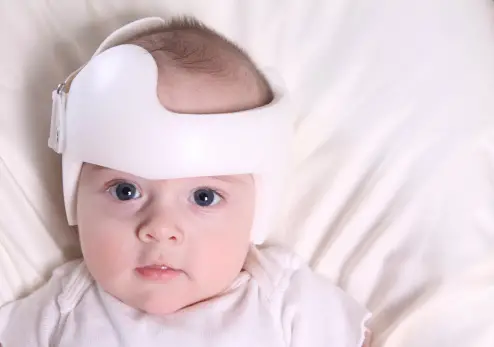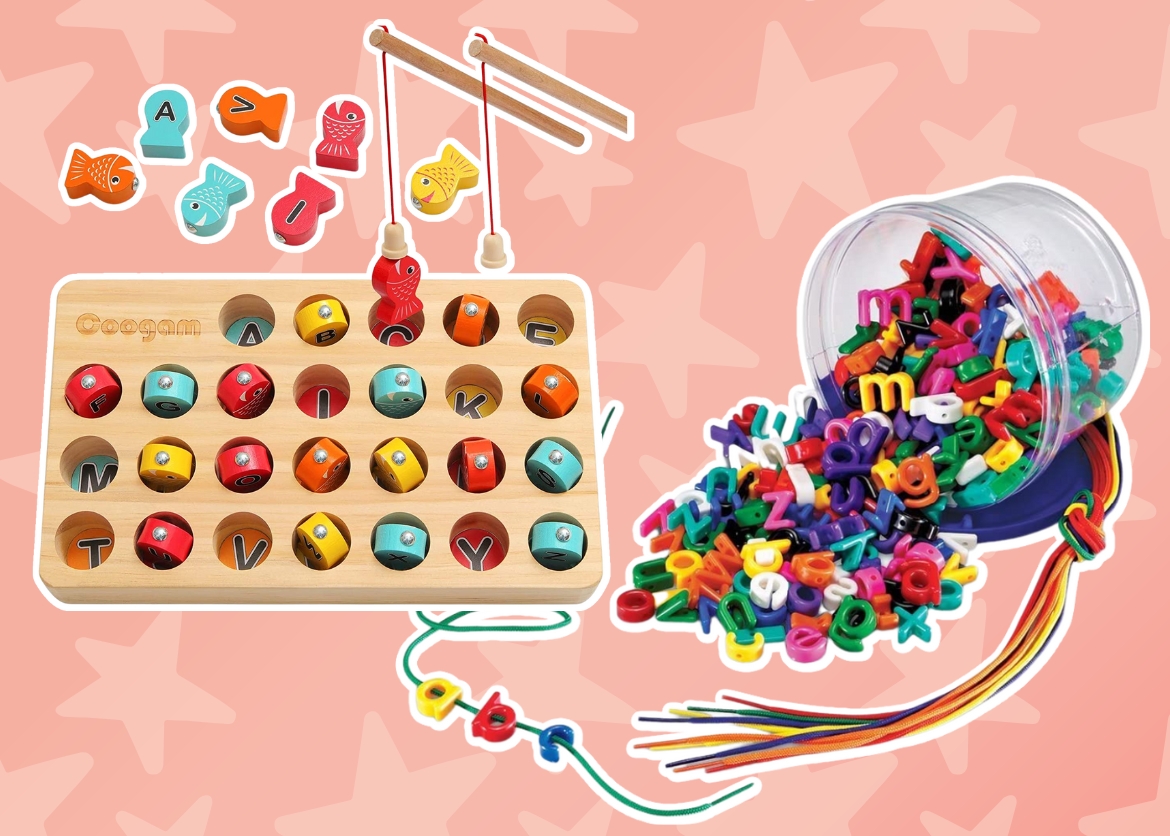Why Do Babies Have to Wear Helmets?
Babies are precious little beings that require a lot of care and attention. As parents, we want to do everything in our power to ensure their safety and wellbeing. One thing that has become increasingly common in recent years is the use of baby helmets. But why do babies have helmets?
Baby helmets are often used to treat plagiocephaly, which is a condition where a baby’s head becomes flattened or becomes misshapen due to prolonged pressure on one area of the skull. This can happen when babies spend a lot of time lying on their backs or sitting in car seats or other devices that put pressure on their heads.
Most babies with plagiocephaly are prescribed a helmet by their pediatrician to help reshape their head and prevent further flattening. The helmet works by applying gentle pressure to certain areas of the skull, encouraging growth and helping to round out the head.
It’s important to note that not all babies need helmets, and they should only be used under the guidance of a healthcare professional. Helmets require careful fitting and monitoring to ensure they are effective and safe for your child.
While helmets can be helpful for some babies, they may not be necessary or effective for others. Every child is different, so it’s always best to consult with a pediatrician if you have concerns about your child’s head shape or development.
Introduction to Plagiocephaly and Torticollis
Plagiocephaly and Torticollis: Understanding Common Conditions That Affect Babies’ Head Shape and Neck Muscles

Deformational plagiocephaly, brachycephaly, scaphocephaly, torticollis – these are just some of the terms you may hear when discussing common conditions that affect babies’ head shape and neck muscles. While they may sound intimidating, it’s important to understand what they are and how they can be addressed early on.
Plagiocephaly is a term used to describe an asymmetrical or flattened head shape. Deformational plagiocephaly occurs when a baby’s head gets flattened on one side due to prolonged pressure on that area. This can happen if a baby spends too much time lying in one position, such as on their back or in a car seat. Brachycephaly is another type of flat head syndrome where the back of the head becomes flattened, while scaphocephaly is when the head becomes long and narrow.
Torticollis, on the other hand, is a condition where a baby’s neck muscles become tight or shortened, causing their head to tilt to one side. This can happen during birth if the baby’s neck is stretched or compressed as they pass through the birth canal. It can also occur in the first few months of life due to positioning habits or muscle imbalances.
It’s important to address these issues early on because they can affect brain growth and development. The skull bones and sutures are still soft and malleable during this time, which means that gentle interventions like repositioning techniques or exercises can help improve both head shape and neck mobility.
Pediatricians play an essential role in identifying these deformities during routine check-ups. They will examine your baby’s head for any flat spots or asymmetry and evaluate their range of motion in their neck muscles. If necessary, they may refer you to a specialist like a physical therapist or orthotist who can provide more targeted interventions.
One common intervention for plagiocephaly is helmet therapy. This involves wearing a custom-made helmet that applies gentle pressure to the baby’s head in specific areas to encourage growth and round out any flat spots. While it may seem daunting, studies have shown that helmet therapy is safe and effective when used appropriately.
However, not all babies with plagiocephaly require helmets. Repositioning techniques like tummy time, holding your baby in different positions, and using specialized pillows or wedges can also be effective in improving head shape. Physical therapy exercises can also help improve neck mobility and prevent torticollis from worsening.
It’s important to note that these conditions are relatively common – up to 50% of babies may develop some degree of plagiocephaly – and they do not necessarily indicate neglect or mistreatment on the part of parents or caregivers. It’s simply a matter of understanding how to promote healthy development during this critical period of growth.
Plagiocephaly Facts and Quick Facts about Torticollis
Plagiocephaly is a condition where a baby’s head is flattened on one side due to prolonged pressure on that area. This can occur when a baby spends too much time lying in the same position, such as on their back, or if they favor one side of their head over the other. While plagiocephaly is not typically harmful to a baby’s health, it can cause cosmetic concerns for parents.
Torticollis is a condition where a baby’s neck muscles become tight or shortened, causing their head to tilt to one side. This can be caused by positioning in utero, difficult labor and delivery, or simply from spending too much time in one position after birth. Babies with torticollis may also have difficulty turning their head to the opposite side.
Plagiocephaly and torticollis are often related because babies with torticollis tend to favor one side when lying down, leading to increased pressure on that side of the head. As a result, many babies with torticollis also develop plagiocephaly.
Early intervention is key in treating both plagiocephaly and torticollis, as the bones in a baby’s skull are still soft and malleable in the first few months of life. If left untreated, plagiocephaly can become more severe and may require more invasive treatment options later on.
Treatment for plagiocephaly may include repositioning techniques, helmet therapy, or a combination of both. Repositioning techniques involve encouraging your baby to spend more time on the non-flattened side of their head while awake and during sleep. Helmet therapy involves using a custom-fitted helmet that applies gentle pressure to specific areas of your baby’s skull to help reshape it over time.
While helmet therapy has been shown to be effective in treating moderate-to-severe plagiocephaly, it is not always necessary for mild cases. Your pediatrician or a specialist can help determine the best course of action for your baby.
Treatment for torticollis may include physical therapy, stretching exercises, and positioning techniques to encourage the baby to turn their head to the opposite side. Physical therapy can help loosen tight neck muscles and improve range of motion. Positioning techniques involve placing your baby in different positions throughout the day to encourage them to turn their head and prevent further flattening of one side of their head.
It’s important to note that while plagiocephaly and torticollis are related, they are two separate conditions that require different treatment approaches. If you suspect that your baby may have either condition, it’s important to speak with your pediatrician as soon as possible.
In addition to seeking medical treatment, there are also steps you can take at home to help prevent both plagiocephaly and torticollis from occurring in the first place. These include:
- Providing plenty of tummy time: Tummy time helps strengthen your baby’s neck muscles and encourages them to lift their head.
- Varying positions: Avoid leaving your baby in one position for too long. Instead, try holding them in different positions throughout the day.
- Using a carrier or sling: Carriers and slings allow you to keep your baby close while also providing support for their head and neck.
- Encouraging movement: As your baby gets older, encourage them to move around more by placing toys just out of reach or playing games like peek-a-boo.
By taking these steps early on, you can help reduce the risk of both plagiocephaly and torticollis from occurring in the first place.
Conditions that Cause a Baby to Need a Helmet
Plagiocephaly: A Common Condition that Causes a Baby to Need a Helmet

As a parent, it can be concerning to notice that your baby’s head is not perfectly round. While many babies are born with slightly misshapen heads due to the birthing process, some develop flat spots or asymmetrical shapes over time. This can be caused by a condition called plagiocephaly.
Plagiocephaly is characterized by a flat spot on the back or side of the baby’s head, often accompanied by bulging on the opposite side. It occurs when prolonged pressure is placed on one area of the skull, causing it to flatten out. This can happen if a baby consistently sleeps in one position or spends too much time lying down in car seats or swings.
There are several factors that can contribute to plagiocephaly. Premature birth and multiple births increase the risk, as do medical conditions that require prolonged hospital stays. Babies who spend extended periods of time in NICUs may be more likely to develop plagiocephaly because they are often positioned on their backs for long periods of time.
Fortunately, plagiocephaly is usually not serious and can often be corrected with repositioning techniques and exercises recommended by pediatricians or physical therapists. However, in some cases, helmets may be prescribed to help reshape the skull, which is why do babies wear helmets.
Brachycephaly: Another Condition That Can Cause a Baby to Need a Helmet
While plagiocephaly is characterized by flattening on one side of the head, brachycephaly causes widening at the back of the skull and flattening at the forehead. This condition can occur due to premature fusion of certain bones in the skull or positioning in utero.
Babies with brachycephaly may have wider-than-normal heads and prominent foreheads. They may also experience developmental delays if there is pressure on their brain due to an abnormal head shape.
As with plagiocephaly, repositioning techniques and exercises may be helpful in correcting brachycephaly. However, in some cases, helmets may be prescribed to encourage proper skull growth.
Craniosynostosis: A Rare Condition That May Require Surgery
While plagiocephaly and brachycephaly are relatively common conditions that can often be corrected without surgery, craniosynostosis is a more serious condition that requires medical intervention. This rare condition occurs when the bones of the skull fuse together too early, causing an abnormal head shape and potential pressure on the brain.
Craniosynostosis can cause a variety of symptoms, including an abnormally shaped head, difficulty breathing or eating, developmental delays, and seizures. Treatment for craniosynostosis usually involves surgery to separate the fused bones and allow for proper skull growth.
Age for Beginning Helmet Therapy for Positional Skull Deformity
Helmet therapy is a common treatment for positional skull deformity in infants. This condition occurs when an infant’s head is frequently in the same position, causing the skull to become flattened or misshapen. While this condition is not harmful to a baby’s health, it can cause parents to worry about their child’s appearance and may lead to self-esteem issues later in life. Fortunately, helmet therapy can correct the problem and restore your baby’s natural head shape.
Infants between the ages of 3 and 18 months are typically recommended for helmet therapy. The earlier the treatment begins, the better the chances of correcting the skull deformity. Infants who are younger than 3 months old may not be suitable candidates for helmet therapy as their skulls are still soft and malleable. On the other hand, infants who are older than 18 months may not benefit from helmet therapy as their skulls have already begun to harden.
The exact age for beginning helmet therapy may vary depending on the severity of the positional skull deformity and the recommendation of a pediatrician or specialist. It is important to seek medical advice if you suspect your baby has a positional skull deformity, as early intervention can improve outcomes and prevent more invasive treatments later on.
Parents often wonder how long their baby will need to wear a helmet during treatment. The typical duration of helmet therapy is around three to six months, although this can vary depending on individual circumstances. During this time, your baby will wear a custom-fitted helmet that applies gentle pressure to specific areas of their head while leaving room for growth elsewhere.
While some parents may feel hesitant about putting their child in a helmet at such a young age, it is important to remember that this treatment is safe and effective when done under proper medical supervision. In fact, studies have shown that children who undergo helmet therapy experience significant improvement in head shape compared to those who do not receive treatment.
It is also important to note that helmet therapy is not the only treatment option for positional skull deformity. In some cases, repositioning techniques may be effective in correcting the problem without the need for a helmet. However, if your baby’s condition is severe or does not improve with repositioning alone, helmet therapy may be necessary.
Duration of Helmet Therapy for Babies
The duration of helmet therapy for babies varies based on the severity of their condition and the age at which treatment begins. On average, babies wear helmets for 3 to 6 months, but some may require longer treatment periods. The goal of helmet therapy is to correct the shape of the baby’s head by applying gentle pressure in specific areas.
The first few weeks of helmet therapy are crucial as this is when the most significant changes in head shape occur. During this time, it is essential to follow a strict wearing schedule recommended by your pediatrician or specialist. The helmet should be worn for 23 hours a day, with one hour allotted for cleaning and bathing.
Regular check-ups with a pediatrician or specialist are necessary to monitor progress and adjust treatment as needed. These visits typically occur every two to four weeks during the course of treatment. During these appointments, your doctor will evaluate your baby’s head shape and make any necessary adjustments to the helmet.
It is important to note that not all babies require helmet therapy. If you notice that your baby’s head shape looks different than usual, it is best to consult with your pediatrician or specialist before pursuing any treatment options.
Factors Affecting Duration
Several factors can affect the duration of helmet therapy for babies. These include:
- Age: The younger the baby, the faster their skull bones grow and fuse together. This means that younger babies may require less time in a helmet than older babies.
- Severity: The severity of cranial asymmetry can also impact the duration of helmet therapy. More severe cases may require longer periods in a helmet than mild cases.
- Compliance: Consistent use of the helmet according to instructions provided by specialists can shorten treatment times while non-compliance can prolong it.
- Genetics: Some studies suggest that genetics play a role in cranial asymmetry development; therefore, genetic factors could influence how long helmet therapy is needed.
- Other underlying medical conditions: If your baby has other underlying medical conditions, such as torticollis or plagiocephaly, they may require longer treatment periods in a helmet.
The Importance of Following Recommended Duration
Parents should follow the recommended duration of helmet therapy to ensure the best possible outcome for their baby’s head shape. While it can be tempting to remove the helmet early, doing so can result in incomplete correction of cranial asymmetry. This means that your baby’s head shape may not fully develop correctly and could lead to future complications.
It is also important to note that while helmet therapy can improve cranial asymmetry, it does not guarantee complete correction. Some babies may still have minor differences in head shape after treatment; however, these differences are typically not noticeable to others and do not impact brain development.
Tummy Time and Its Importance

Tummy time is a crucial aspect of a baby’s growth and development as it helps to strengthen their neck, back, and shoulder muscles, which are necessary for sitting, crawling, and walking. When babies spend too much time in swings or car seats or sleep on their backs for extended periods during the day, they are at risk of developing a flat spot on their head due to the constant pressure on one area. Tummy time can help alleviate this risk.
The American Academy of Pediatrics recommends that parents start tummy time with their babies from birth and gradually increase the duration as the baby grows. It is essential to understand that tummy time does not mean leaving your baby alone on their stomachs but rather engaging with them while they are in this position.
Working towards Growth through Tummy Time
Tummy time is an excellent way to encourage your baby’s growth as it provides them with an opportunity to develop their motor skills. By placing your baby on their stomachs, you give them a chance to use different muscle groups that would be otherwise underutilized if they were always lying on their backs.
Moreover, tummy time also promotes sensory development by allowing babies to explore different textures and surfaces using their hands and mouths. This exploration helps stimulate neural pathways in the brain responsible for sensory processing.
Pressure Relief through Tummy Time
When babies spend too much time in one position (the same position), they may develop flat spots on their heads due to pressure exerted on one area. Tummy time can help relieve this pressure by allowing babies to rest in different positions throughout the day.
It is important to note that while tummy time can prevent flat spots from forming, it cannot correct existing ones. Therefore, if you notice any flattening or asymmetry in your baby’s head shape, consult with your pediatrician immediately.
SIDS Campaign vs. Tummy Time
In 1994, the American Academy of Pediatrics launched a “Back to Sleep” campaign to reduce the risk of Sudden Infant Death Syndrome (SIDS). The campaign recommended that parents place their babies on their backs when putting them to sleep. However, this recommendation led to an increase in flat head syndrome cases.
While it is essential for parents to follow the SIDS campaign guidelines, they should prioritize tummy time during the day when the baby is awake and supervised. By doing so, parents can ensure that their babies are getting enough time on their stomachs without compromising their safety while sleeping.
Parents’ Role in Tummy Time
As a parent, you play a crucial role in ensuring your baby gets enough tummy time throughout the day. Starting from birth, you should aim for at least three sessions of tummy time per day, each lasting three to five minutes. As your baby grows and becomes more comfortable with this position, you can gradually increase the duration and frequency of these sessions.
It is also important to make tummy time fun and engaging for your baby by using toys or other stimuli that encourage movement and exploration. You can also get down on your belly with your baby and interact with them at eye level.
Also read: How to Make Tummy Time Fun
Helmet Wearing Duration and Frequency
Correcting head shape abnormalities in babies is a crucial aspect of their overall health and development. One of the most effective ways to do this is by using helmets, which are specially designed to apply gentle pressure on specific areas of the skull. However, it’s not enough to simply put a helmet on your baby’s head and hope for the best. There are certain guidelines that need to be followed regarding helmet wearing duration and frequency.
Recommended Helmet Wearing Duration
The recommended duration of helmet wearing varies depending on the severity of the condition. In general, babies should wear their helmets for 16-23 hours per day. This may seem like a lot, but it’s important to remember that this is a critical period in your baby’s development, and any deviation from the prescribed schedule can have negative consequences.
Length of Time Required
The length of time required for helmet wearing can vary greatly depending on the individual case. Some babies may only need to wear their helmets for a few weeks, while others may require several months or even up to a year. It all depends on how severe the condition is and how quickly your baby responds to treatment.
Following Prescribed Schedule
It’s extremely important to follow the prescribed schedule when it comes to helmet wearing duration and frequency. Removing the helmet prematurely can delay or even prevent correction altogether. Your doctor will monitor your baby’s progress closely and adjust the schedule as needed.
Insurance Coverage
If your baby requires a helmet for medical reasons, there’s a chance that your insurance company will cover some or all of the cost. However, it’s important to check with your provider beforehand so you’re not hit with any unexpected expenses down the line.
Tips for Making Helmet Wearing Easier
Wearing a helmet can be uncomfortable for babies at first, but there are things you can do to make it easier for them:
Helmet Therapy as Treatment for Positional Skull Deformity
Positional skull deformities are a common occurrence in infants. This condition happens when an infant’s head is frequently in the same position, causing the skull bones to flatten or shift, resulting in a misshapen head. While this condition can be concerning for parents, it is important to note that it is not harmful to the baby’s health and can be treated with helmet therapy.
Helmet therapy, also known as cranial remolding, is a non-invasive treatment for positional skull deformities in infants. The helmet works by applying gentle pressure to specific areas of the skull, allowing for the bony plates to gradually shift into a more symmetrical position over time.
Deformational plagiocephaly is one of the most common types of positional skull deformity. It occurs when there is flattening on one side of the back of an infant’s head. This flattening may cause asymmetry in facial features and ear alignment. In severe cases, deformational plagiocephaly may lead to developmental delays if left untreated.
Craniosynostosis is another type of positional skull deformity that requires medical attention. This condition occurs when one or more sutures (joints between bones) in an infant’s skull fuse too early, leading to abnormal head shape and brain growth issues.
It is important to note that helmet therapy should only be used for deformational plagiocephaly and not craniosynostosis or other medical conditions.
The best way to prevent positional skull deformities from occurring is by practicing safe sleep habits. Infants should always be placed on their backs to sleep and have tummy time while awake under supervision.
Physical Therapy for Positional Skull Deformities
Physical therapy can also help treat positional skull deformities alongside helmet therapy. Physical therapists work with babies and their families to develop exercises that encourage neck movement and reduce pressure on the affected areas of the skull.
Physical therapy can also help prevent positional skull deformities from occurring in the first place. Parents can work with physical therapists to learn safe and effective ways to hold, carry, and play with their infant to promote healthy head shape development.
Hospital Treatment for Positional Skull Deformities
In some cases, hospital treatment may be necessary for positional skull deformities. This is especially true if the condition is severe or if helmet therapy and physical therapy are not effective.
Hospital treatment may include cranial surgery to correct craniosynostosis or other medical conditions that cause positional skull deformities. While this type of treatment is more invasive than helmet therapy or physical therapy, it may be necessary for certain cases.
Alternatives to Helmet Therapy for Positional Skull Deformity
Repositioning techniques
One of the most straightforward ways to prevent positional skull deformity is through simple repositioning techniques. Changing a baby’s head position during sleep or while feeding can help reduce pressure on certain areas of the head and promote even growth. Parents can try placing their baby on their back to sleep, but alternating which side the baby faces each night. This helps ensure that the baby’s head is not always resting in the same position.
Tummy time
Another effective way to prevent positional skull deformity is by encouraging tummy time when the baby is awake and supervised. Tummy time involves placing a baby on their stomach for short periods throughout the day, which helps strengthen neck muscles and reduces pressure on the back of the head. It also promotes healthy development of motor skills and coordination.
Physical therapy
If a baby already has positional skull deformity, physical therapy may be recommended as an alternative to helmet therapy. A physical therapist can work with the baby to improve their range of motion and strengthen neck muscles, which can help correct skull shape over time. Physical therapy sessions typically involve exercises such as stretching, massage, and guided movement.
Cranial osteopathy
Cranial osteopathy is another alternative therapy that some parents may consider for positional skull deformity. This approach involves gentle manipulation of the skull bones to improve alignment and reduce pressure on certain areas of the head. The goal is to encourage natural correction without invasive procedures or equipment like helmets.
Helmet-free repositioning therapy
Some clinics offer a helmet-free repositioning therapy program for babies with positional skull deformity. This approach involves regular monitoring and adjustment of the baby’s head position to encourage natural correction over time. The program typically includes guidance from a specialist who will assess your child’s condition and provide personalized recommendations based on their specific needs.
Observation
In some cases, simply observing your child’s head shape over time may be recommended as many cases of positional skull deformity will correct themselves without intervention. However, it is important to monitor your child’s head shape closely and seek medical advice if you notice any significant changes or concerns.
Understanding Why Do Babies Need Helmets
In conclusion, it is important to understand the reasons why do babies have helmets for positional skull deformity. Plagiocephaly and torticollis are common conditions that can cause a baby’s head to become misshapen or asymmetrical. While these conditions can be concerning for parents, there are effective treatments available.
Helmet therapy is one such treatment option that has been shown to be effective in correcting positional skull deformities. It involves the use of a specially designed helmet that applies gentle pressure to certain areas of the baby’s head, encouraging growth in other areas.
It is important to note that helmet therapy is not always necessary or appropriate for every case of positional skull deformity. The age at which a baby begins helmet therapy, as well as the duration and frequency of wearing the helmet, will depend on individual circumstances.
In addition to helmet therapy, tummy time is an important aspect of promoting healthy development in infants. Spending time on their stomachs helps babies build strength in their necks and upper bodies, which can help prevent or correct torticollis and other conditions that contribute to positional skull deformity.
Parents who are concerned about their child’s head shape should consult with their pediatrician or a specialist in cranial orthotics. Together, they can determine whether helmet therapy or another treatment option is appropriate for their child’s needs.

 PARENTING TIPS
PARENTING TIPS PREGNANCY
PREGNANCY BABY CARE
BABY CARE TODDLERS
TODDLERS TEENS
TEENS HEALTH CARE
HEALTH CARE ACTIVITIES & CRAFTS
ACTIVITIES & CRAFTS


